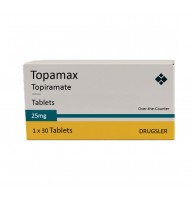Topiramate exerts its effects on the brain through several mechanisms, which contribute to its use in treating epilepsy, migraines, and other conditions. Its primary actions include modulating neurotransmitter activity and stabilizing neuronal activity.
Enhancing GABA Activity: Topiramate enhances the activity of gamma-aminobutyric acid (GABA), an inhibitory neurotransmitter in the brain. By increasing GABA activity, topiramate helps to calm neuronal activity, reducing the likelihood of seizures and potentially alleviating some symptoms of anxiety.
Inhibiting Excitatory Neurotransmitters: Topiramate inhibits the action of certain excitatory neurotransmitters, such as glutamate. This inhibition helps to prevent the excessive neuronal firing that can lead to seizures and may also contribute to its effectiveness in preventing migraines.
Modulating Ion Channels: Topiramate affects voltage-gated sodium channels and calcium channels, which play a crucial role in the generation and propagation of electrical signals in neurons. By modulating these channels, topiramate helps to stabilize neuronal membranes and prevent abnormal electrical activity in the brain.
Carbonic Anhydrase Inhibition: Topiramate inhibits carbonic anhydrase enzymes, which can lead to changes in the acid-base balance in the brain. While this effect is not fully understood, it is believed to contribute to the drug's anticonvulsant and migraine-preventive properties.
These combined actions result in the stabilization of neuronal activity, making topiramate effective in reducing the frequency and severity of seizures in epilepsy and preventing migraine headaches. Additionally, these effects can sometimes lead to cognitive side effects, such as difficulties with concentration, memory, and speech, as the brain adjusts to the medication. These side effects can vary in intensity and may diminish over time.
Overall, topiramate's influence on neurotransmitter systems and neuronal stability underlies its therapeutic effects, while also explaining some of the potential side effects related to cognitive function and mood.

